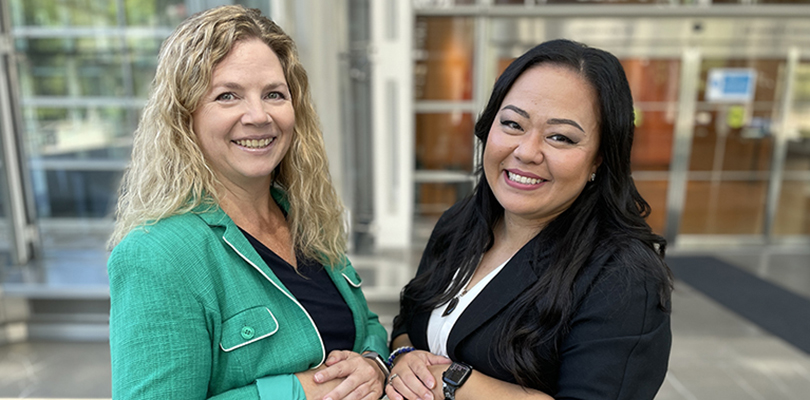Breaking up is hard. Splitting up the assets you acquired while married is even harder — and could include your CalPERS pension.
“Divorcing can be an emotionally charged process, especially when there are disagreements over who gets what assets,” says Janine Dolar (pictured above on the right), who works in CalPERS’ community property and retirement services. “We are a neutral third party and do our best to help members through the process.”
If you’re an active member, your CalPERS pension and health benefits are put on hold while the division of property gets sorted out. But if you’re retired, half of your monthly allowance may be withheld until the claim is resolved. That’s why it’s in your interest to resolve any community property issues (PDF), which is the service credit, contributions, and interest accrued during your marriage or domestic partnership.
It’s a simple process that can feel complicated and overwhelming while you’re going through it, explains Greta Moritz (pictured above on the left), who also works in CalPERS’ community property and retirement services. But in reality, it involves three steps.
These are the three steps — and documents — CalPERS needs to split your retirement benefits:
- A written notification of a separation, divorce, or end of a domestic partnership. The Divorce & Your CalPERS Pension webpage on our website walks you through this first step.
- A marital agreement that clarifies if a former spouse or domestic partner will receive a portion of your benefits or not.
- A court order explaining exactly how those benefits are to be divided. A Guide to CalPERS Community Property (PDF) explains this process in depth.
What You Can Do
Most of the work — the legal work — is done between you and your former spouse outside of CalPERS with your attorneys or mediators. The bottom line is you and your former spouse must agree on how to divide the assets accrued during your marriage or domestic partnership.
A lot of what happens in a divorce is hard to understand, which is why Moritz advises that “it’s important to take care of yourself.” CalPERS recommends:
- You review, understand, and agree to all court documents before you sign them and they’re filed with the court.
- If you don’t understand something, ask the person (i.e., attorney or mediator) to explain what the language in the court order means for you and/or your former spouse.
- Resolve any community property claims as soon as possible. Death does not resolve a community property claim. Your pension can be part of probate and tied up for years. No benefits can be paid until the claim is resolved.
“We’ve seen former spouses, children from other marriages, and distant relatives file claims against a member’s death benefits,” Dolar says. “We have cases that go back 15 years, so it’s imperative to resolve community property claims sooner rather than putting it off.”
What CalPERS Can Do
We can explain where your case is in the process and the documents needed to move forward. We can also guide you to resources that explain in detail what you need to do.
Check out this video that walks you through the process to divide your CalPERS benefits. You can also reach out to our customer contact center at 888 CalPERS (or 888-225-7377).
What CalPERS Can’t Do
CalPERS is a neutral third party in this scenario. Our role is to review documents and process court-ordered instructions to resolve community property claims. We can’t:
- Offer any legal advice or opinions.
- Help you fill out forms or documents.
- Make decisions or advise you about dividing community property.
- Communicate directly with the courts.
“While this process can seem overwhelming, we’re here to help,” Dolar says. “We’re here to help ensure you get the help you need to navigate this challenging life transition.”

